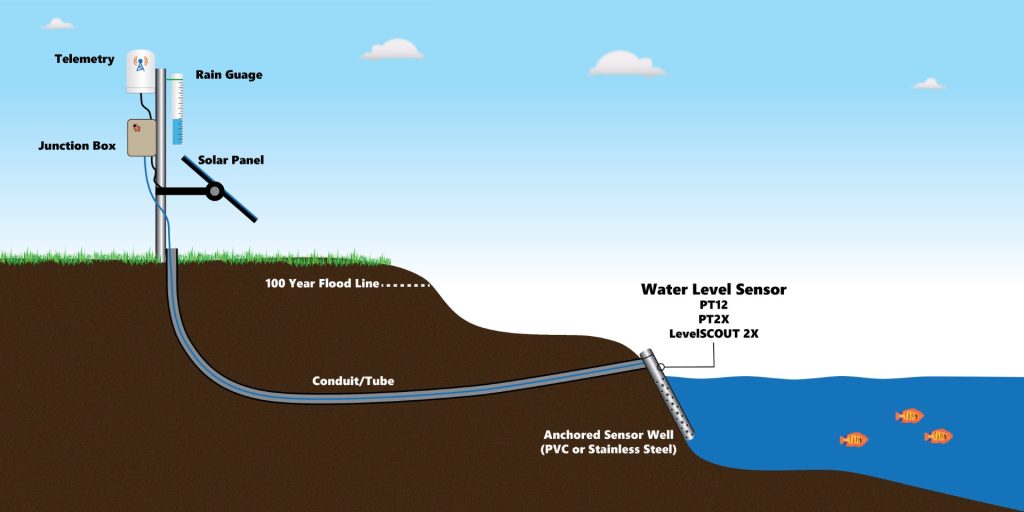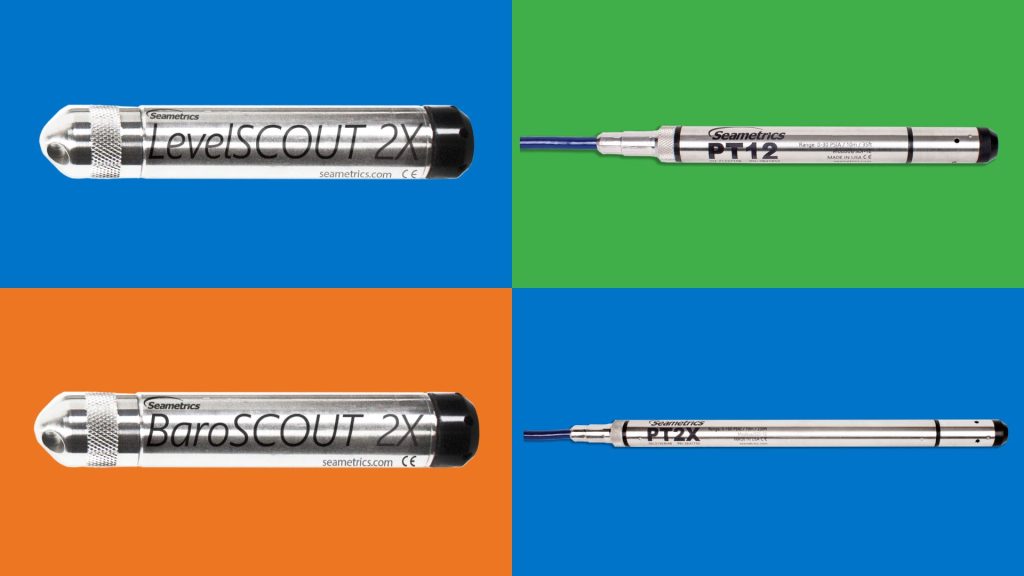
Climate change has amplified the frequency and severity of storms, leading to an increased risk of flooding. The economic repercussions of floods, including property damage and loss of life, highlight the urgent need for effective flood monitoring systems. In this blog post, we will discuss the importance of real-time flood monitoring, the ideal monitoring locations, and the essential components of a flood alert monitoring system. Additionally, we will introduce Seametrics sensors as reliable solutions for flood alert and stormwater monitoring applications.
While predictive models provide valuable insights into potential flooding risks, they do not serve as real-time alerts. It is crucial to establish local monitoring systems that can promptly notify communities about imminent flood threats. These systems must deliver reliable and up-to-date information on weather conditions and water levels for effective flood preparedness. Modern monitoring systems, equipped with solar power and wireless communication capabilities, offer greater flexibility in deployment locations.
Identifying the appropriate monitoring locations involves considering factors beyond simply placing systems along tributaries or near communities at risk. It also necessitates selecting areas where flow monitoring has been conducted, enabling accurate estimation of water levels based on flow rates. Moreover, sensor placement should minimize exposure and reduce the likelihood of damage caused by flooding. Even installing equipment on bridges should be carefully considered, especially if they are susceptible to submersion or debris flows. A recommended approach is to position sensors in safe locations and connect them to loggers and telemetry systems located beyond potential flood damage, typically above the 100-year flood line. However, in areas experiencing more frequent 100-year floods, locating the systems even farther away may be prudent.

To ensure the effectiveness of flood alert systems, several essential components are required:
- Water Level Sensor: A pressure transducer, such as the Seametrics PT12, is a popular choice for flood alert monitoring. Available in 316 stainless steel or titanium variants, with pressure ranges from 5PSIG to 300PSIG, the PT12 offers reliable and accurate data. Opting for a gauged (vented) sensor is recommended to minimize the impact of barometric pressure fluctuations on readings.
- Datalogger and Telemetry System: An efficient flood alert system requires a robust datalogger and telemetry system. These components collate and transmit collected data while sending alerts if predetermined limits are exceeded.
- Rain Gauge: To record localized rainfall events, an optical or tipping bucket rain gauge can be utilized. Rainfall data complements water level measurements, providing a comprehensive understanding of the flood conditions.
- Power Supply: The power source for flood alert systems is a critical consideration. Options such as solar power with a battery backup, standalone batteries, or line power should be evaluated based on site-specific requirements.

Seametrics Sensors for Flood Alert and Stormwater Monitoring: Seametrics offers a range of sensors designed specifically for flood alert monitoring. These sensors provide accurate and reliable data, facilitating effective flood preparedness and response. Here are a few notable Seametrics sensor options:
- PT12: The PT12 is a durable SDI-12/Modbus sensor suitable for datalogging and monitoring systems. Available in 316 stainless steel or titanium variants, with pressure ranges from 5PSIG to 300PSIG, the PT12 ensures precise measurements. Choosing a vented (gauged) sensor is recommended to mitigate the influence of barometric pressure changes.
- PT2X: The PT2X is a smart sensor that supports SDI-12 and Modbus communication protocols. In addition to an internal logger, it can be equipped with internal batteries for independent data logging. When utilized in flood alert monitoring systems, the PT2X provides the advantage of separate logged files while being connected to a datalogger and telemetry system.
- LevelScout2X with BaroScout2X: The LevelScout2X is a cost-effective sensor powered by its internal battery, making it ideal for locations where line or solar power is not feasible. This self-powered unit extends the battery life of telemetry systems. Paired with the BaroScout2X, which compensates for barometric fluctuations, the LevelScout2X offers reliable water level measurements.
Implementing effective flood alert monitoring systems is essential for mitigating the economic and human impacts of flooding. Real-time monitoring, strategic sensor placement, and reliable components are key factors in achieving accurate and timely flood alerts. Seametrics sensors, such as the PT12, PT2X, and LevelScout2X, provide dependable solutions for flood monitoring applications. By leveraging advanced sensor technology, we can enhance our ability to monitor and respond to floods, safeguarding lives and minimizing the damage caused by these natural disasters
